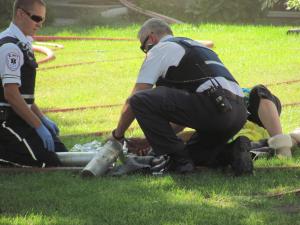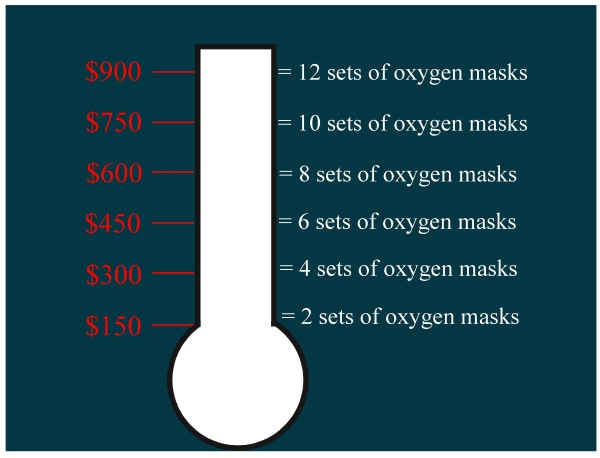by: Meghan Eggertson**
Regular visits to the veterinarian are important for all pets, but many cats will go years between exams and only come in if they are very sick. Cats are masters of disguising sickness, so annual exams are crucial for detecting early signs of illness such as dental disease, hyperthyroidism, and arthritis. Catching these problems early can ultimately result in a longer, happier life for your cat (and possibly even a lower vet bill). Vaccinations are also vital, even for indoor cats, as some upper respiratory viruses don’t require direct cat-to-cat contact and there’s always the possibility of a bat carrying rabies entering your home. The most common reason given by owners for not bringing a cat in for annual exams is that it’s too stressful for the cat. Here, I will list some steps that will help make your cat’s visit to the vet as stress free as possible.
Carrier and traveling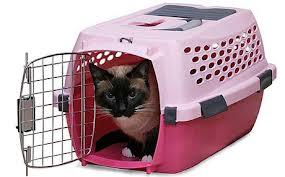
One of the biggest issues people have with bringing their cat to the vet starts at home: getting the cat in the carrier. We regularly have appointments cancelled because the cat saw the carrier come out and is now hiding, or the owner shows us their battle wounds from trying to push an unwilling cat into the carrier. I will tell you now: it doesn’t have to be this way, you can make your cat love its carrier! Starting off with a kitten is easiest because they will have no negative feelings associated with the carrier, but it can be done with adult cats as well. For the first 12 years of her life, I had to plan hours ahead of bringing my cat to the vet to account for all the time required to catch, wrangle, and fight with her to put her into a carrier. Now, I just place her in front of the carrier and she walks right in. Here are a few easy steps.
- Get the right kind and size of carrier.
We recommend a hard sided carrier that is just big enough for your cat to stand up, lay down, and turn around in, but isn’t so big that they’ll slide around inside. Have a separate carrier for each cat; placing more than one cat in a carrier can result in redirected aggression and fighting. One that has an easily removed lid with snap sides is ideal so that they do not have to be “dumped out” once they get to the clinic. Place a thick blanket or small piece of carpet in the bottom to give them some traction. To reduce anxiety and increase your cat’s enjoyment of the crate the inside can be sprayed or wiped with Feliway, a calming cat hormone (available at our clinic). If you do this, allow 10 – 15 minutes for the spray to dry before putting the cat in.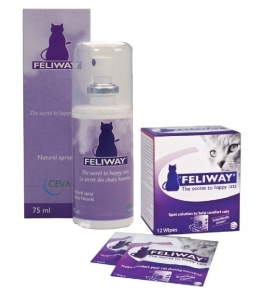
- Leave the carrier out.*
Place the carrier on the floor in an area where the cat spends most of their time. Take the door off or tie it back so that it won’t accidentally swing shut and hurt or scare the cat. Fill it with treats or toys, or even place your cat’s meals in it. If the cat will not enter on their own, take the lid off to try and entice them in, and only place it back on once they are comfortably going in on their own. Cats like small hiding spaces, and soon your cat will come to see the carrier as a friendly and safe space.
- Close the carrier door.
Once your cat is comfortable going into the carrier and is spending time in it on their own, start closing the door. Start with short periods of time (several seconds) and increase the time as long as the cat remains calm. If the cat starts to get agitated, open the door and try again later for a shorter period of time.
- Travel without going to the vet.
Now that your cat loves its carrier, time to make it comfortable in the car. If possible, place the carrier on a seat where it can be strapped in with a seatbelt. This helps reduce the amount of bouncing around the cat experiences and will also prevent the carrier from flying across the car if the brakes are slammed on. Keep the music low. Start with short trips and work up to longer ones as the cat becomes more relaxed in the car. Remember, just like dogs, cats should not be left unattended in a closed car, especially in the summer.
While going without a carrier may seem like the easier option, it is actually much more stressful to the cat in the long run, and can actually be dangerous to the cat as well as the owner. I have seen cats claw up their owner’s face in an attempt to get away from a dog in the waiting area. I have also participated in “cat”-hunts resulting from cats wiggling out of their owner’s arms and finding some obscure area of the clinic to hide. Having a carrier where your cat feels safe and out of harm’s way will greatly reduce their stress.
 Arriving at the clinic
Arriving at the clinic
When you arrive at the clinic, you may chose to leave your cat in the car at first. Check in with our receptionists and let them know you have arrived. When a room is available, then bring your cat into the clinic.
If you chose to bring your cat in with your right away, remember that cats feel the most safe when they are up high. While in the waiting area, keep the carrier off the floor by placing it on a chair, your lap, or the counter (if there’s room). This also helps prevent nosy dogs from investigating and stressing out your cat. Keep your cat in the carrier while waiting to enter the exam room. We will usually weigh your cat in the carrier and then weigh the empty carrier after they are in the exam room, to determine their weight. We also have a smaller pet scale that we may utilize instead of the one in the main lobby area. This scale is in a quiet area of the clinic away from the hustle and bustle of other animals.
During the exam
When you first enter the exam room, open the carrier and allow the cat a chance to come out on their own while you are waiting for the vet to come in. Do not “dump-out” the cat. A cat’s personality can change dramatically between being at home and being in the clinic. While many cats may love attention and snuggling at home, if they’re stressed, they want to be left alone and touching them may just aggravate them more. Speak in a soft, calm voice and keep your movements as smooth and small as possible. Stay calm and relaxed, especially if your cat begins acting scared or “aggressive”. For example, if your cat begins hissing or growling during the exam, don’t yell at them to stop or raise your voice, as this can only upset them more. I have also seen owners get bit or scratched because they have attempted to “calm” their upset cat by patting them on the head or giving them a hug. If a technician has been brought in to help hold, it’s best just to stand back so the cat does not redirect their frustration towards you.
Medication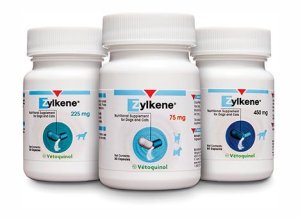
Some cats are higher stress than others and may need a little extra help to relax. Zylkene is a non-prescription supplement that helps reduce stress reactions and has no side effects or reactions with other medications. It can be started the day before a scheduled appointment or can be given long term. If this is not enough, there are prescription medications that can be used, but your cat must have been seen by a veterinarian within the last year in order for them to be prescribed.
Your cat’s health is very important to us, and we want to make their visit as peaceful and productive as possible. The less stressed your cat is, the more thorough the exam can be, and they can also receive better treatment if they are sick.
Book your cat’s appointment today!
* As an added note regarding leaving the carrier out, if possible always leave the carrier where the cat can get comfortable in it. Our Marketing Director, Jennifer, says her cat’s carrier is always left out in a quiet area with the door open. Her cat Playdoh enjoys going and laying down in there for an afternoon nap. If it is a comfortable place for them at home, it won’t be anxiety inducing for them to go in to when they come to the vet. (since writing this blog post Playdoh has moved on to the Rainbow Bridge, Jennifer said with their new cat Pekoe, they still leave a carrier in a location where she can come and go into it as she pleases, just so it is a familiar, unstressful item).
**Meghan is no longer with us, as she moved out East in 2016

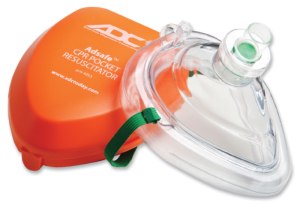 When a fire call happens in Regina RFPS are sent out. They are fully equipped to deal with all aspects of fire rescue and we thank them immensely for their service to our city! However, there is one area where, although they do the best they can with the equipment they have, even with the aid often from Regina’s EMS, the equipment is lacking. This is where we feel that “Every Breath Counts”. Animal oxygen masks are certainly not standard equipment and we are working to change that.
When a fire call happens in Regina RFPS are sent out. They are fully equipped to deal with all aspects of fire rescue and we thank them immensely for their service to our city! However, there is one area where, although they do the best they can with the equipment they have, even with the aid often from Regina’s EMS, the equipment is lacking. This is where we feel that “Every Breath Counts”. Animal oxygen masks are certainly not standard equipment and we are working to change that.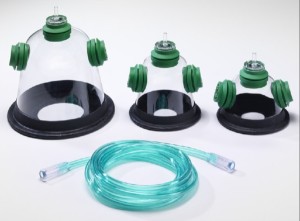 perfectly. Although it has worked to save animals rescued from fires in the past, the ideal situation is to have the appropriate mask to fully cover the animal’s face to increase the amount of oxygen received thus increasing the chance of resuscitation.
perfectly. Although it has worked to save animals rescued from fires in the past, the ideal situation is to have the appropriate mask to fully cover the animal’s face to increase the amount of oxygen received thus increasing the chance of resuscitation.
